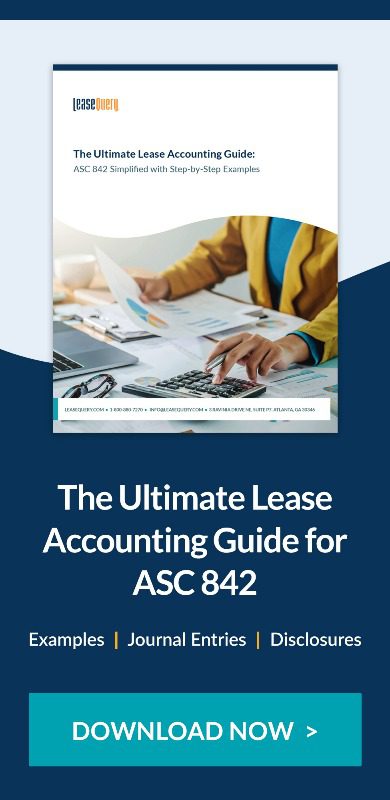Transitioning to ASC 842, IFRS 16, or GASB 87 is a monumental undertaking. No matter which standard you’re transitioning to, you’re probably already having nightmares about numbers and spreadsheets. We know it can be scary but it’s important not to let those lease accounting nightmares haunt you. To keep your nightmares off Elm Street and dream about some other happy place where your spreadsheets balance, your audits are more efficient, and compliance isn’t such a scary word, we’ve put together a list of nine real-life lease accounting nightmares and how you can wake up before they become a reality.
Nightmare #1: Misinterpreting the standards
The new guidelines all require you to make a lot of judgment calls. No matter how much you study the new standards, there’s still plenty of room for human error. Unfortunately, this makes the potential for auditors to find errors in your logic fairly high. Wake up from this nightmare by taking the time to research and invest in a compliant software built with lease accounting expertise and backed by ongoing support from seasoned lease accountants. When it comes to interpreting the new standards, let the software do the hard part for you so you’re not stuck unarmed when the threat of compliance comes creeping up behind you.
Nightmare #2: Being unaware of the risk of non-compliance
Experts have already warned about the severe consequences organizations face if they’re not ready to comply with the new lease accounting standards, but how much research have you actually done? Failure to comply can lead to risks ranging from fronting the money for additional audit fees, to auditors either refusing to issue an opinion or delivering an unfavorable opinion. Negative report cards for public companies could lead to the loss of shareholder confidence or withdrawal of investors. Wake up from this nightmare by doing your research beforehand. While understanding what the new regulations mean across the board, it’s imperative that you research in detail what the standards mean for your company and industry specifically.
Nightmare #3: Using the wrong tool
Trying to reach compliance with the wrong tool is like trying to fight a vampire with a silver bullet – it’s not going to work. You need a wooden stake to destroy your vampire and a solution more powerful than Excel to ensure your compliance. Unfortunately, lease accountants using Excel have lost money, missed important deadlines, and had issues with their internal controls. Learn more about why Excel is the wrong solution for lease accounting. Even if you’ve chosen to use something other than Excel, be sure you don’t invest in software that can’t live up to its promises. Investing in a solution that requires you to use different modules for different types of assets will also create hassles for you and increase your chance of error. Wake up from this nightmare by identifying the right software to meet your needs under the new standards:
- Accept that Excel isn’t the right way to account for your leases
- Ask how many accountants they have on staff since you know there will be questions only an accountant can answer
- Use software that’s asset agnostic
Download this lease accounting software checklist to learn more about which functionalities to look for.
Nightmare #4: Unable to convince leadership why you need lease accounting software
When you’re in the weeds of lease accounting, you understand the value of investing in the right tool. But sometimes senior leadership won’t free up the budget for it. In doing so, they miss out on potential cost savings, auditing efficiencies, and – most importantly – being compliant. Wake up from this nightmare by making the case for lease accounting software to senior leaders with these three points:
- Lease accounting in Excel will set you up for non-compliance
- Software built by accountants and backed by accounting expertise will make you and everyone else in your business more efficient
- Having access to the right tools prevents burnout – according to Gallup, employees who experience burnout are 2.6 times more likely to quit than other employees
Building your case for lease accounting software to senior leadership may take some time. With these key points however, persuading the C-suite to give their buy-in should be as easy as Annie Wilkes convincing Misery author, Paul Sheldon, that she is in fact, his “number one fan”.
Nightmare #5: Rushing the process
How many leases does your company have? What about embedded leases? Are your classifications correct? Are you going to handle lease accounting in-house or outsource it? Whether you’re rushing the process of lease accounting or caught in a scary movie showdown, you may neglect to ask yourself the important questions or think through the answers, which can lead to critical mistakes. Wake up from this nightmare by investing the time now to ask all the right questions and create a solid plan. Learn more about how much time you should estimate for your lease accounting project.
Nightmare #6: Facing compliance with no project plan
Lease accounting compliance is no small feat. And facing long-term compliance without a plan in action is just setting yourself up for failure. There is an orderly path to success through outlining the process, understanding the correct reporting, and achieving compliance. Don’t allow yourself to lose sleep over starting too late or facing unforeseen challenges along the way. Wake up from this nightmare by setting yourself up from the beginning. The keys to a successful transition include the people, tools, and processes.
Nightmare #7: Undermining your plan to outsource
Are you planning on paying a consulting firm to complete your first transition journal entry? What are you going to do for the rest of the year? What happens when you enter into a new lease, or pull a report? Outsourcing can be beneficial, as long as the foundation for data governance and reporting is in place. Otherwise, you’ll be stuck relying on the outside firm for everything and being charged at each request. Wake up from this nightmare by following these best practices for outsourcing your lease accounting.
Nightmare #8: Failing to prepare for your post-transition audit
Whether internal or external, auditors play a key role during the adoption of the new standards. If you don’t recognize early on that lease audit procedures under the new rules are changing drastically, you could be facing the dangers of painstaking audit risks and potential failures for your first post-transition audit and beyond. Wake up from this nightmare by understanding the lease audit procedures under the new standards. Under the new guidance, most of your leases will be disclosed on your balance sheet, making your first audit scary and intense. However, following these steps to prepare will have you ready to intercept lease accounting inaccuracies in no time.
Nightmare #9: Non-compliance: The biggest nightmare of them all
If you encounter any one of these nightmares, you may find yourself non-compliant as the new standards begin to go into effect. Whether the threat of compliance has you running for the hills, feeling as unlucky as a black cat on Friday the 13th, or losing sleep at night, it’s time to wake up from this nightmare. Make the right choices today with your lease accounting and prevent major problems down the line.












